Affiliate links on Android Authority may earn us a commission. Learn more.
Spec showdown: OPPO Find X vs the competition
June 20, 2018

OPPO just announced the Find X, a high-end smartphone that can go head-to-head with the best of them. It sports top-of-the-line specs and a few innovative features, but it also has a couple of drawbacks.
Here’s how the OPPO Find X compares to the Samsung Galaxy S9 Plus, OnePlus 6, and HUAWEI P20 Pro.
The Find X has a 6.42-inch AMOLED display with a resolution of 2,340 x 1,080 pixels and an aspect ratio of 19.5:9. The panel is curved on the sides like on the Galaxy S9 series, doesn’t have a notch, and is surrounded by extremely thin bezels — 93.8 percent screen-to-body ratio. In fact, the top bezel is so thin there’s no room to fit for the phone’s 25MP front-facing camera. OPPO took a page out of Vivo’s playbook, hiding the selfie snapper in a module inside the device, which pops up from the top edge in just 0.5 seconds when you launch the camera app.
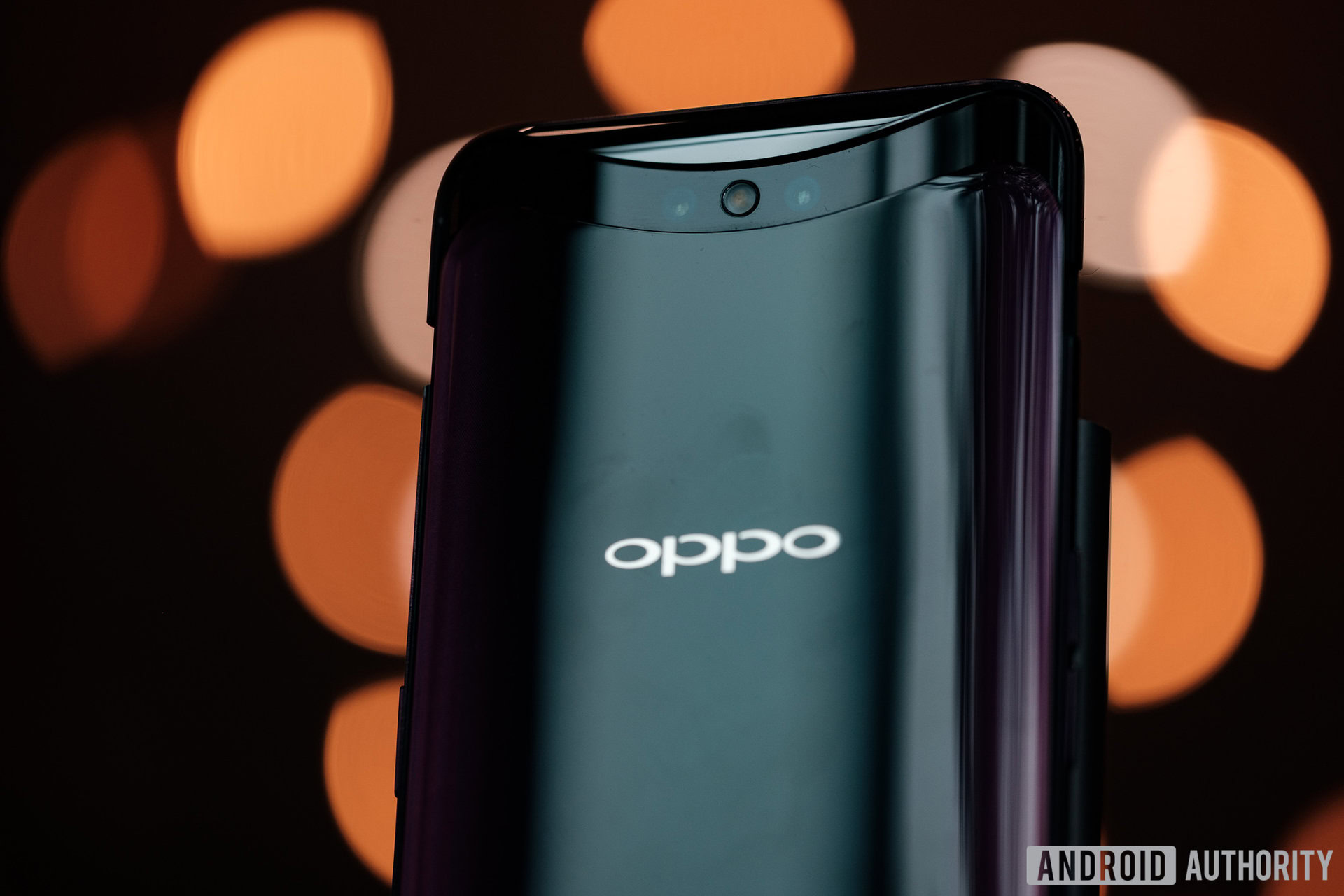
This movable module also houses the rear dual-camera setup, which consists of 16 and 20MP sensors and supports AI-powered scene recognition. This design gives the Find X a very futuristic vibe and makes the back look extremely clean, though if the movable mechanism stops working, you won’t be able to to use the cameras anymore.
The OPPO Find X is powered by the latest and greatest Snapdragon 845 chipset, paired with 8GB of RAM, making it one of the most powerful handsets on the market. It’s the second Android smartphone to support 3D facial recognition (behind Xiaomi Mi 8 Explorer Edition), which is a lot safer than the 2D facial recognition of many recent Android phones. Once you pick up the device and swipe up, the camera will pop up automatically and unlock the device when it recognizes you.
The company calls the feature — wait for it — O-Face. Seriously.
The OPPO Find X doesn't have a fingerprint scanner.
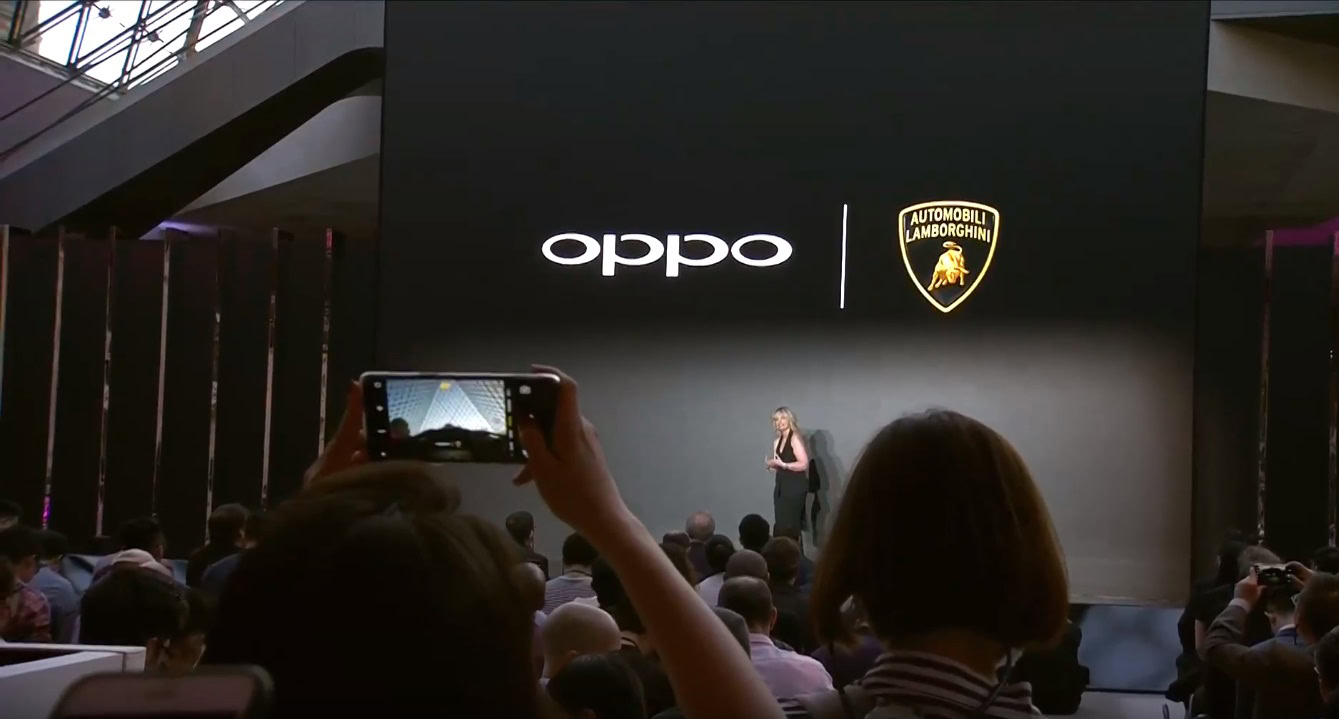
Unfortunately, OPPO followed in Apple’s footsteps and nixed the fingerprint scanner on the Find X. This means you’re stuck with a PIN code or O-Face for unlocking the device, which is not to everyone’s liking. Facial recognition might not work in super low-light conditions, when wearing a baseball hat with sunglasses, or if you run into a door and get a black eye. Even if it does work at all times, sometimes it’s more convenient to unlock your phone without raising it to your face.
Oppo’s flagship has 256GB of non-expandable storage, packs a 3,730mAh battery with VOOC Flash Charge, and runs Android 8.1 Oreo with ColorOS 5.1 on top (Android P beta support coming soon).
Most of that sounds great, but the phone’s missing features could be deal breakers for some. It lacks a headphone jack, wireless charging, and IP rating for protection against water and dust.
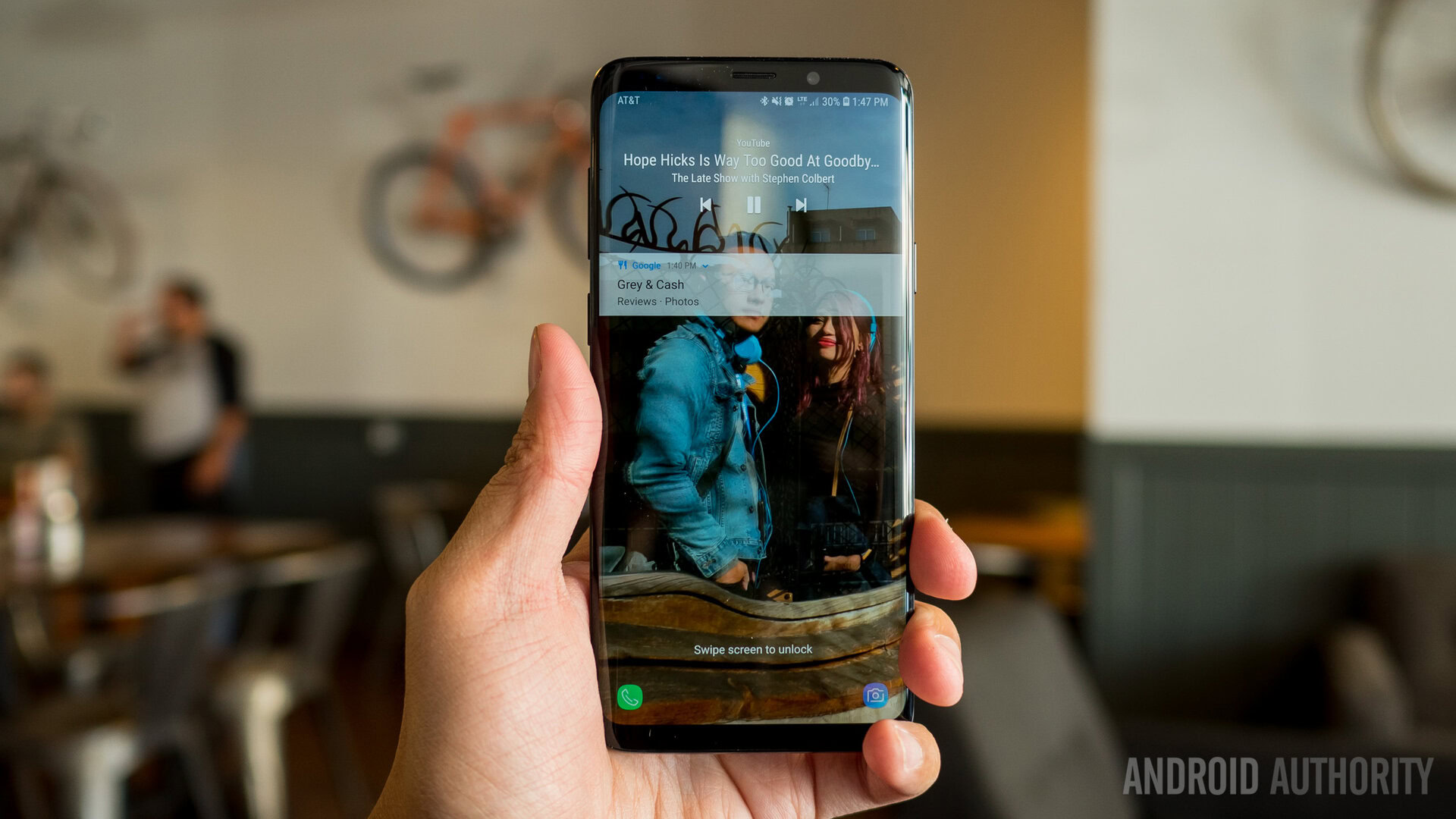
In comparison, the Galaxy S9 Plus is equipped with a smaller 6.2-inch Super AMOLED display. It’s also curved on the sides, but offers a higher resolution at 2,960 x 1,440 pixels and a slightly different 18.5:9 aspect ratio. The flagship is powered by the Snapdragon 845 or Exynos 9810 chipset, depending on the market, paired with 6GB of RAM. This means it sports 2GB of RAM less than the OPPO Find X, but you likely won’t notice any difference in performance — 6GB of RAM is still more than enough for a flagship.
The S9 Plus also has dual cameras on the back featuring two 12MP sensors with 2x digital zoom for those close-up shots. One of the cameras sports a dual aperture, which should improve images captured in low-light conditions, but our very own Gary Sims called it a gimmick after testing it. The front camera comes in at 8MP, which means it has almost a third the pixels of the OPPO Find X’s 25MP selfie snapper. A higher megapixel count doesn’t necessarily translate to a better image, but it can capture more detail, allowing for better zooming and cropping options.
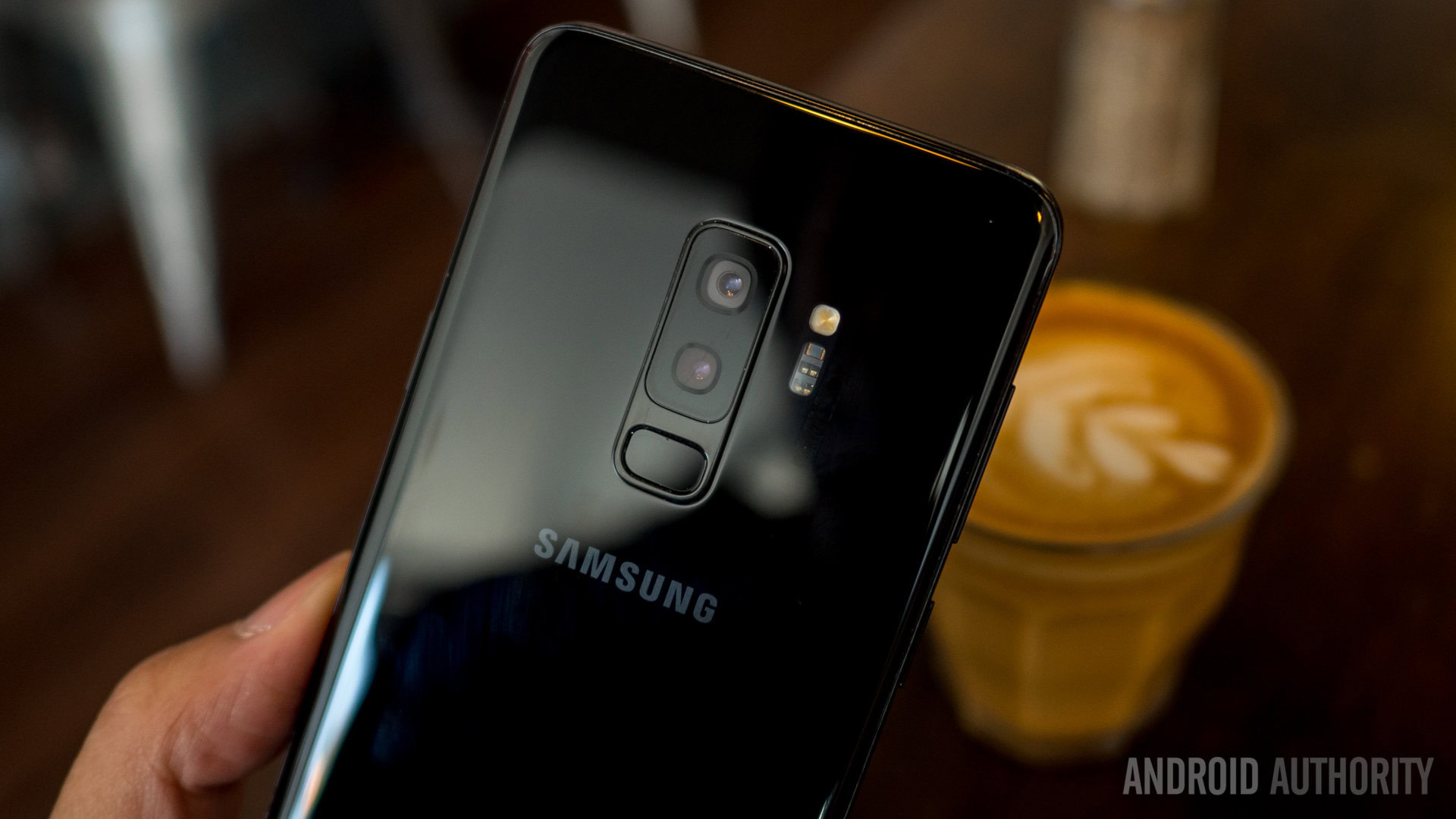
Samsung’s flagship doesn’t have 3D facial recognition, but it has an iris scanner and a rear-mounted fingerprint scanner. There’s also software-based facial recognition on board, but it’s less secure than the other two biometric methods. The smartphone features a smaller 3,500mAh battery, 64, 128, or 256GB of storage, and Android 8.0 with Samsung Experience on top.
Unlike the OPPO Find X, the Galaxy S9 Plus has a headphone jack, supports expandable storage, and has an IP68 rating for dust and water resistance. It also supports wireless charging and will keep you entertained with its AR emoji feature.
Overall, the OPPO Find X and Galaxy S9 Plus are both fantastic devices, but Samsung’s flagship arguably offers more. If you care about things like a headphone jack, fingerprint scanner, expandable storage, water resistance, and wireless charging, it’s the one you should get. You probably won’t go wrong with the Find X if the flashy design and the 3D facial recognition tech really appeal to you, though.
| OPPO Find X | Samsung Galaxy S9 Plus | |
|---|---|---|
Display | OPPO Find X 6.42-inch AMOLED panel 2,340 x 1,080 resolution 19.5:9 aspect ratio | Samsung Galaxy S9 Plus 6.2-inch Super AMOLED panel 2,960 x 1,440 resolution 18.5:9 aspect ratio |
Processor | OPPO Find X Snapdragon 845 | Samsung Galaxy S9 Plus Snapdragon 845 or Exynos 9810 |
RAM | OPPO Find X 8GB | Samsung Galaxy S9 Plus 6GB |
Storage | OPPO Find X 256GB | Samsung Galaxy S9 Plus 64/128/256GB |
MicroSD | OPPO Find X No | Samsung Galaxy S9 Plus Yes |
Camera | OPPO Find X Rear: 16MP with f/2.0 aperture + 20MP with f/2.2 aperture Front: 25MP | Samsung Galaxy S9 Plus Rear: 12MP with f/1.5-2.4 aperture + 12MP with f/2.4 Front: 8MP |
Battery | OPPO Find X 3,730mAh | Samsung Galaxy S9 Plus 3,500mAh |
Headphone jack | OPPO Find X No | Samsung Galaxy S9 Plus Yes |
IP rating | OPPO Find X No | Samsung Galaxy S9 Plus IP68 |
Software | OPPO Find X Android 8.1 Oreo with ColorOS 5.1 | Samsung Galaxy S9 Plus Android 8.0 Oreo with Samsung Experience 9.0 |
Fingerprint scanner | OPPO Find X No | Samsung Galaxy S9 Plus Yes |
Other features | OPPO Find X 3D facial recognition, VOOC Flash Charge, AI-powered rear cameras | Samsung Galaxy S9 Plus Facial recognition (software), iris scanner, AR Emoji, Bixby |
The OnePlus 6 is more like the OPPO Find X than the Galaxy S9 Plus. It has the same Snapdragon 845 chipset under the hood, a dual-camera setup on the back with 16 and 20MP sensors, and 8GB of RAM (a 6GB variant is also available). The device also doesn’t support expandable storage, isn’t IP rated, and lacks wireless charging.
It has a slightly smaller Full HD+ display at 6.28-inches (18:9 aspect ratio), with a notch on top, a lower resolution 16MP selfie snapper, and a smaller 3,300mAh battery. You can get it with 64 or 128GB of storage, which is less than the 256GB you get with the Find X. The OnePlus 6 also doesn’t support 3D facial recognition, though it has a software-based facial recognition feature on board.
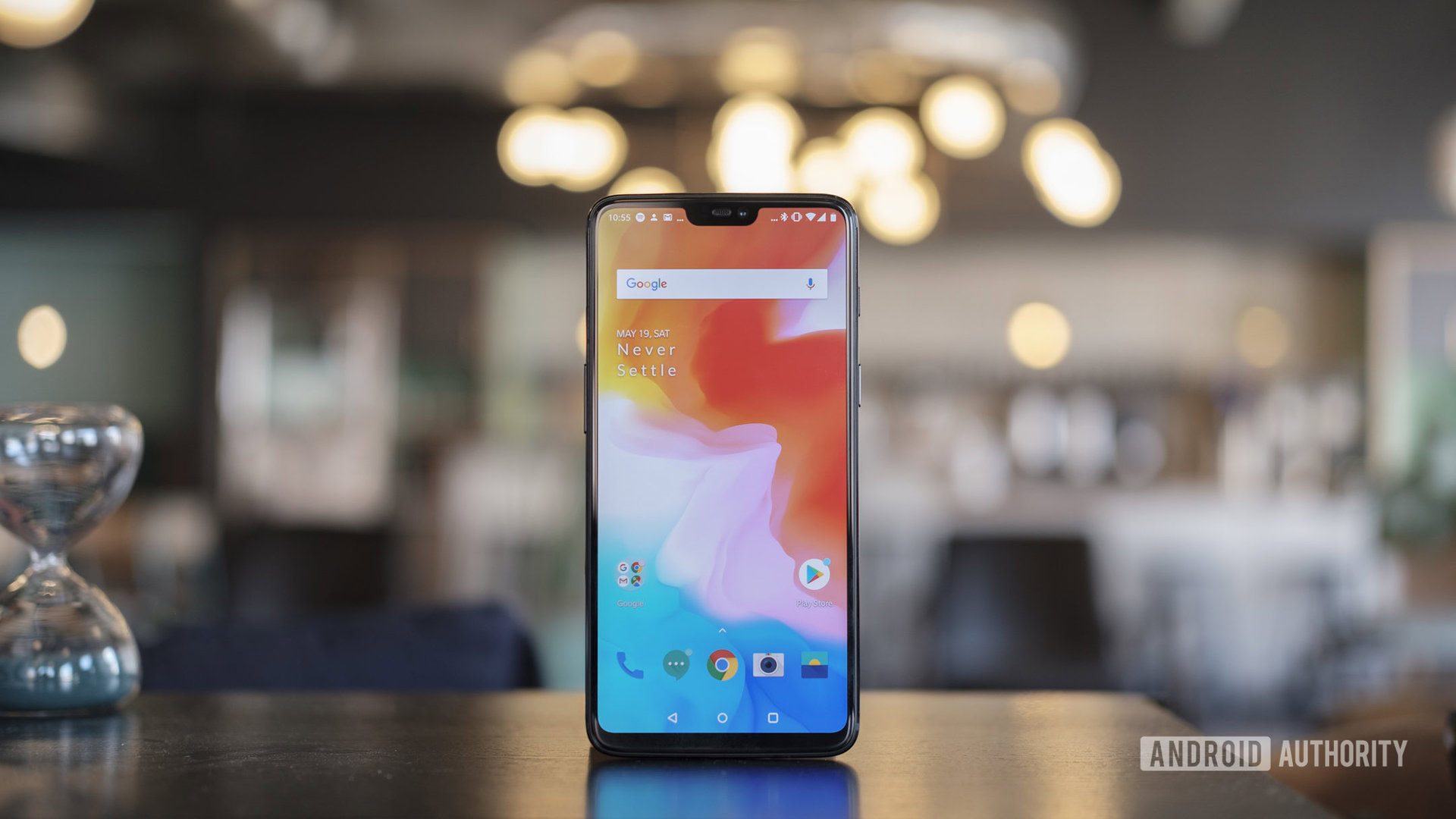
However, the flagship has a few advantages over the Find X. The first is the software. It runs Android 8.1 Oreo with OxygenOS on top, which is the best Android skin out there in my opinion. It offers a stock-like experience and adds a number of useful features like off-screen gestures, App Locker, Reading Mode, and more.
Oppo’s ColorOS is a bit heavy. It changes the look and feel of Android quite a bit and imitates Apple’s iOS in many ways. It doesn’t have an app drawer, which means all your apps are scattered across your home screens. Overall, OxygenOS look better and offers more.
Unlike the OPPO Find X, the OnePlus 6 has a headphone jack.
Next up is the headphone jack. The company knows it’s still a vital part of a smartphone for many, which is why you’ll find it on the OnePlus 6. The flagship also sports a fingerprint scanner on the back and an alert slider on the right side for quickly switching between three modes: silent, vibrate, and ring.
Read next: 5 reasons you should buy the OnePlus 6
There’s no clear winner in the OPPO Find X vs OnePlus 6 battle — it all comes down to what features are important to you. I’d go with the OnePlus 6 because of the headphone jack, better software experience, and fingerprint scanner, but that’s just me. If you’re willing to give that up for the fancy movable cameras, 3D facial recognition, and slightly bigger display and battery, the OPPO Find X is probably for you.
Oh, and the OPPO Find X costs almost twice as much as the OnePlus 6…
| OPPO Find X | OnePlus 6 | |
|---|---|---|
Display | OPPO Find X 6.42-inch AMOLED panel 2,340 x 1,080 resolution 19.5:9 aspect ratio | OnePlus 6 6.28-inch Optic AMOLED panel 2,280 x 1,080 resolution 18:9 aspect ratio |
Processor | OPPO Find X Snapdragon 845 | OnePlus 6 Snapdragon 845 |
RAM | OPPO Find X 8GB | OnePlus 6 6/8GB |
Storage | OPPO Find X 256GB | OnePlus 6 64/128GB |
MicroSD | OPPO Find X No | OnePlus 6 No |
Camera | OPPO Find X Rear: 16MP with f/2.0 aperture + 20MP with f/2.2 aperture Front: 25MP | OnePlus 6 Rear: 16MP with f/1.7 aperture + 20MP with f/1.7 Front: 16MP |
Battery | OPPO Find X 3,730mAh | OnePlus 6 3,300mAh |
Headphone jack | OPPO Find X No | OnePlus 6 Yes |
IP rating | OPPO Find X No | OnePlus 6 No |
Software | OPPO Find X Android 8.1 Oreo with ColorOS 5.1 | OnePlus 6 Android 8.1 Oreo with OxygenOS |
Fingerprint scanner | OPPO Find X No | OnePlus 6 Yes |
Other features | OPPO Find X 3D facial recognition, VOOC Flash Charge, AI-powered rear cameras | OnePlus 6 Facial recognition (software), Dash Charge |
The HUAWEI P20 Pro’s screen has a notch and is the smallest of the bunch, at 6.1 inches (0.32 inches smaller than the OPPO Find X). It packs the latest Kirin 970 chipset under the hood, which features a neural processing unit (NPU) for AI-related tasks. These include photo-based translations and Smart Tips, which offers advice like turning on the blue light filter when reading in a dark environment. It also brings scene recognition to the P20 Pro, allowing the cameras to detect various scenes and objects and adjust the settings accordingly to improve the image.
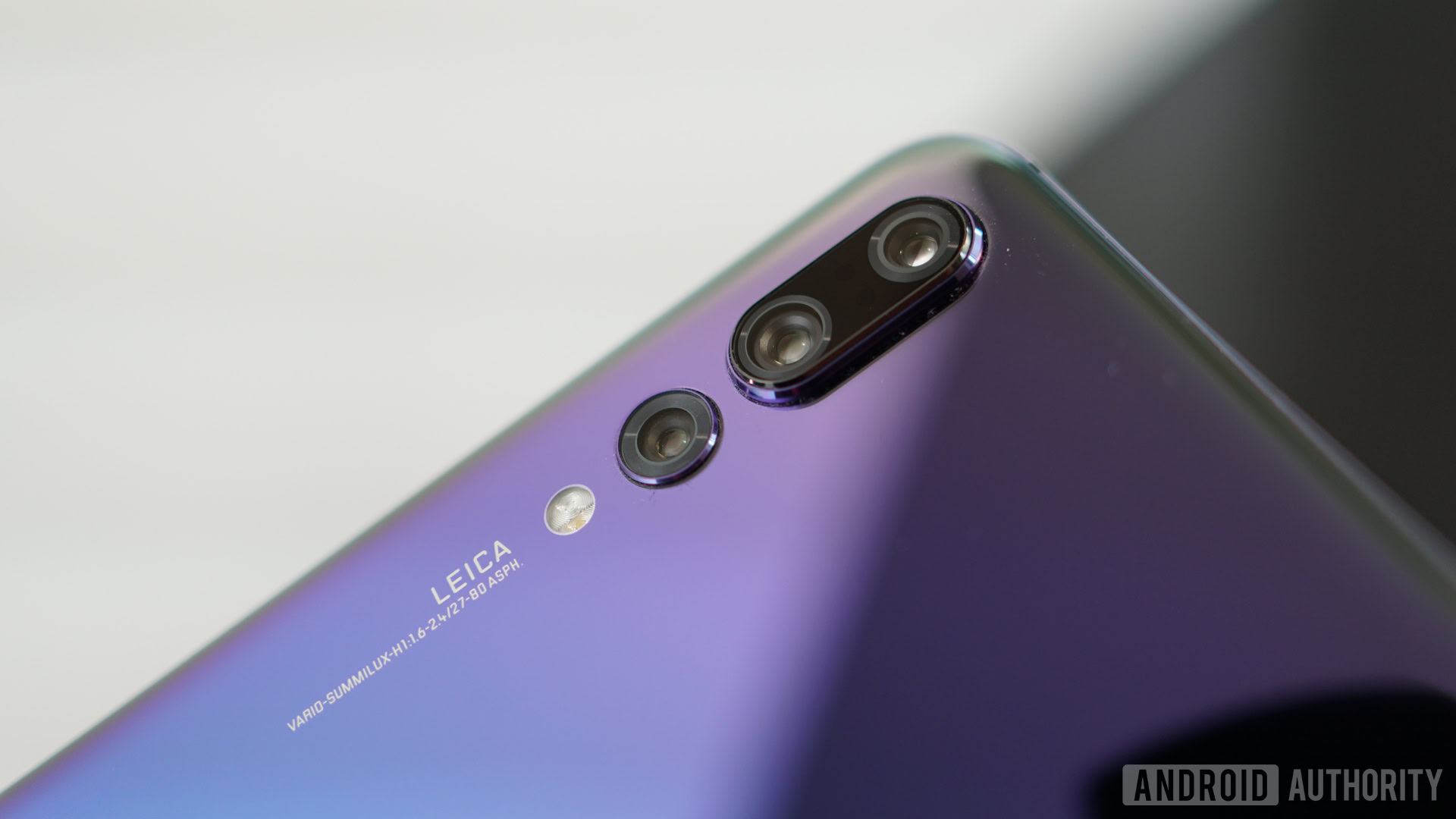
The P20 Pro is the first phone to sport a triple-camera setup on the back, with a 40MP RGB sensor, a 20MP secondary monochrome sensor, and an 8MP telephoto lens. It’s one of the best camera setups on a smartphone for low-light photography. The selfie snapper has a 24MP sensor — 1MP less than OPPO Find X’s front camera.
Huawei’s flagship has 6GB of RAM — the same as the Galaxy S9 Plus and 2GB less than OPPO’s device. It sports 128GB of non-expandable storage, does not have a headphone jack, and runs Android 8.0 Oreo with the EMUI 8.1 skin on top. The skin imitates Apple’s iOS similarly to OPPO’s skin, but you can at least enable an app drawer in the settings.
The HUAWEI P20 Pro sports a massive 4,000mAh battery.
The P20 Pro features a massive 4,000mAh battery — 270mAh larger than the Find X. HUAWEI’s device is also IP67 rated, which means it will survive in up to 3.2 feet (1 meter) of water for 30 minutes. Like its rival, it doesn’t support wireless charging.
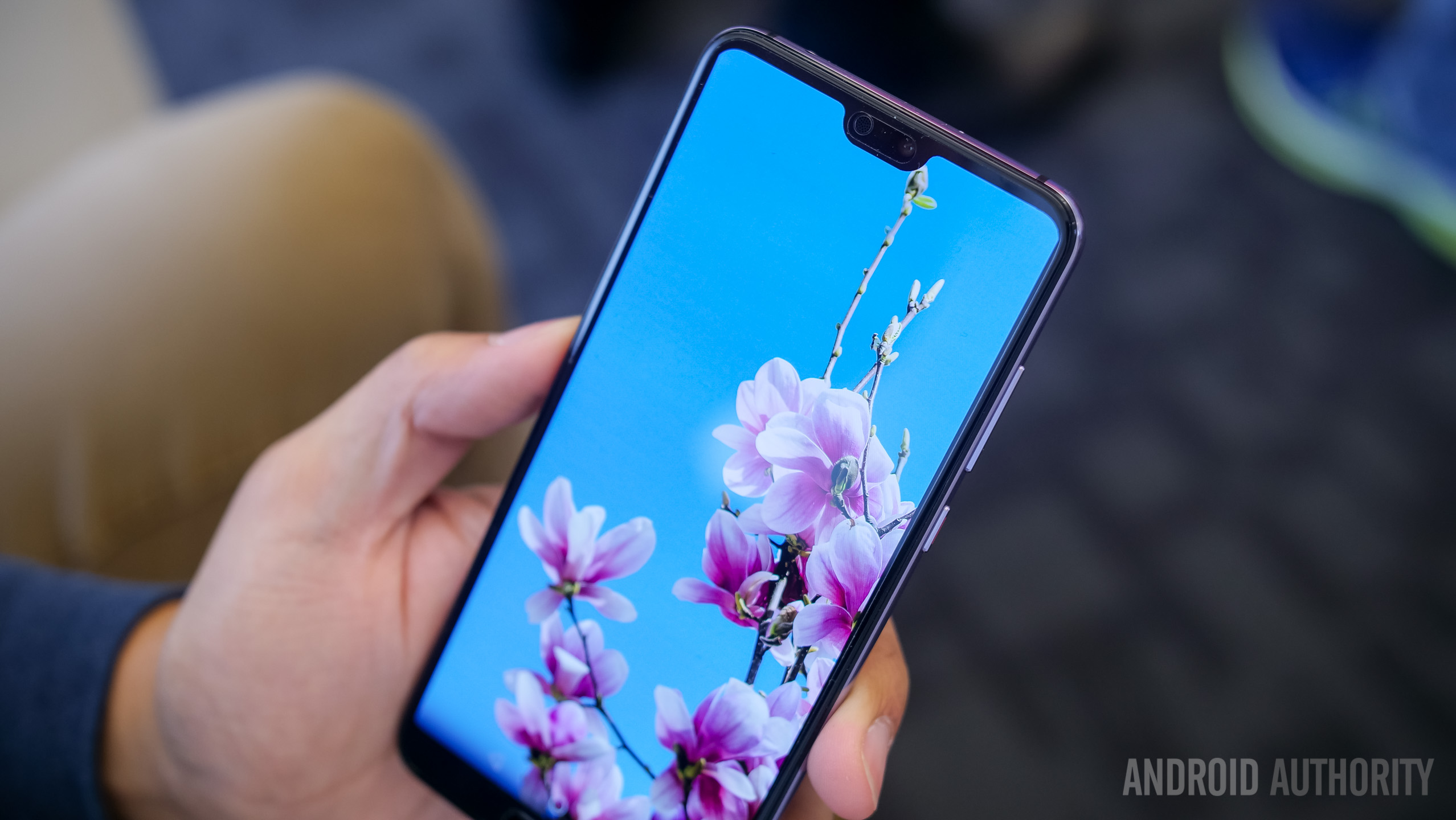
There’s not a lot separating the two devices in performance, though the Find X has more 2GB more RAM. Get the P20 Pro if you’re into photography, care about battery life, and want the peace of mind that comes with the IP67 rating. The OPPO Find X might be a better option if you want a bigger screen without a notch, more storage, fancy 3D facial recognition tech, and a futuristic design.
| OPPO Find X | HUAWEI P20 Pro | |
|---|---|---|
Display | OPPO Find X 6.42-inch AMOLED panel 2,340 x 1,080 resolution 19.5:9 aspect ratio | HUAWEI P20 Pro 6.1-inch AMOLED panel 2,240 x 1,080 resolution 18.7:9 aspect ratio |
Processor | OPPO Find X Snapdragon 845 | HUAWEI P20 Pro Kirin 970 |
RAM | OPPO Find X 8GB | HUAWEI P20 Pro 6GB |
Storage | OPPO Find X 256GB | HUAWEI P20 Pro 128GB |
MicroSD | OPPO Find X No | HUAWEI P20 Pro No |
Camera | OPPO Find X Rear: 16MP with f/2.0 aperture + 20MP with f/2.2 aperture Front: 25MP | HUAWEI P20 Pro Rear: 40MP with f/1.8 aperture + 20 MP with f/1.6 aperture + 8MP with f/2.4 aperture Front: 24MP |
Battery | OPPO Find X 3,730mAh | HUAWEI P20 Pro 4,000mAh |
Headphone jack | OPPO Find X No | HUAWEI P20 Pro No |
IP rating | OPPO Find X No | HUAWEI P20 Pro IP67 |
Software | OPPO Find X Android 8.1 Oreo with ColorOS 5.1 | HUAWEI P20 Pro Android 8.0 Oreo with EMUI 8.1 |
Fingerprint scanner | OPPO Find X No | HUAWEI P20 Pro Yes |
Other features | OPPO Find X 3D facial recognition, VOOC Flash Charge, AI-powered rear cameras | HUAWEI P20 Pro Dual-SIM support, fingerprint scanner gestures, facial recognition (software) |
Should you get the OPPO Find X over the competition?
I’d rather get the Galaxy S9, OnePlus 6, or HUAWEI P20 Pro over the Find X. I dig the phone’s design and power, but I can’t get over the fact it not having a fingerprint scanner. I’m also not super impressed with the movable module holding the cameras, because I’m concerned with how it will hold up after years of use. The Find X is also very expensive, at 999 euros.
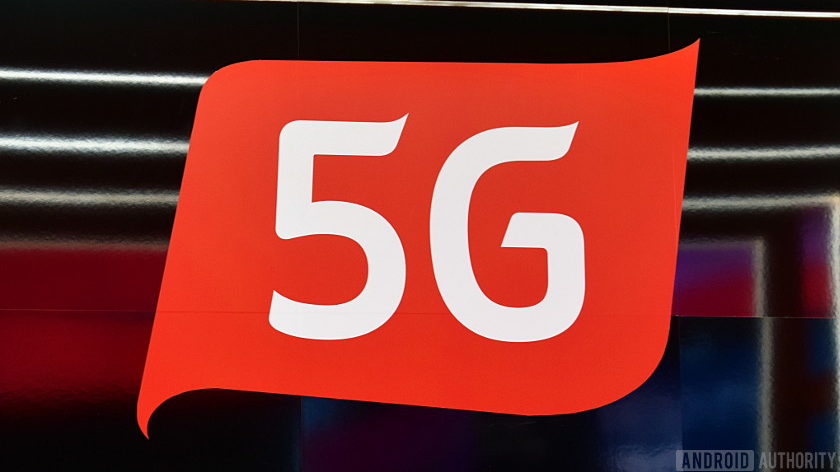
OPPO didn’t reveal how many times the module can move up and down without a problem, but we can get a good idea of what to expect by looking at the Nex phone from vivo, which is owned by the same company as OPPO (BBK Electronics). vivo claims the Nex’s camera mechanism has undergone extensive testing and can be raised and lowered 50,000 times.
Although that sounds like a lot, it really isn’t. On the OPPO Find X, the camera has to pop up whenever you unlock the phone if you’re using the 3D facial recognition feature. According to a study by Asurion (via New York Post), the average American checks their phone 80 times per day. At that rate, you’d raise the camera module 50,000 times in well under two years. Yikes!
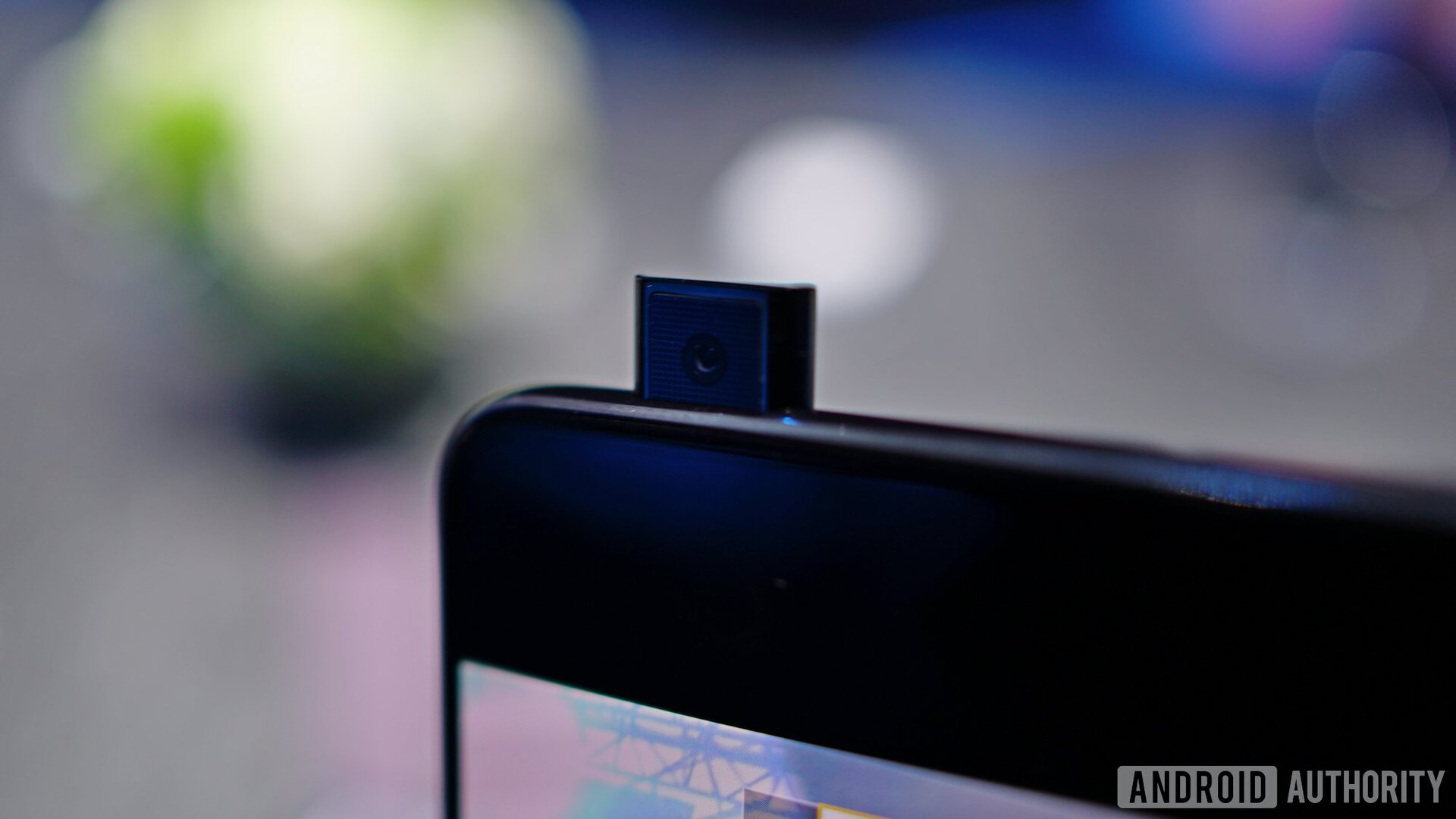
If you don’t have a problem with the high price, lack of a fingerprint scanner, and the movable camera mechanism, the OPPO Find X could be a great option. It offers all the performance you need, has a gorgeous design, and feels like it’s from the future.
Would you get the OPPO Find X over any of these phones? Let me know in the comments!